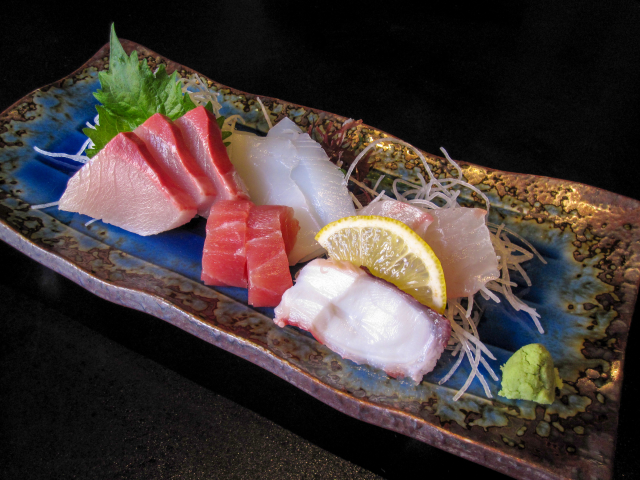
It’s not the fish that’s changing, but who gets to eat it.
The coronavirus pandemic is convincing a lot of people to eat at home, and for many that means plenty of delivery pizza and instant ramen. While those are both fortifying comfort foods, they’re not what most people would call fine dining, and so understandably a lot of foodies are eager to return to their favorite restaurants as soon as they can.
However, there might be an unexpected culinary upside to the pandemic: a surge in the quality and flavor of sashimi you can eat at home.
The piscatorial prophet to first put forth this theory is Japanese blogger Makoto Suzuki. Suzuki is no ordinary fish fan, as his previous job was as an auctioneer at Tokyo’s Tsukiji Fish Market, the biggest fish market in the entre world. These days, he continues to put his trained eye to use by selecting the tastiest cuts of sashimi he can find at the supermarket when doing his family’s grocery shopping, and on a recent excursion he spotted an extremely delicious-looking block of katsuo (bonito).
▼ A plate of katsuo tataki (seared bonito sashimi)
Sure enough, when Suzuki took the fish home, sliced it, and fed it to his family, they found the flavor to be off-the-charts fantastic. Granted, many sashimi aficionados will tell you that katuso caught in the spring, called “hatsu katsuo,” is better than that in other seasons, but even by that standard, Suzuki felt it was incredibly delicious, and the clue as to why, he says, is in the shape of the cross sections he sliced.
Ordinarily, Suzuki says the katsuo he can find at the supermarket has a slightly triangular cross section, as the block tapers on one side, a sign that the cut is from the outer edge of the fish. For this super-tasty sashimi, though, the cross sections were stout rectangles, meaning they came from the fish’s deeper layers, where there’s generally less meat available. However, the rectangular sashimi block weighed the same approximately 250 grams (8.8 ounces) as the tapered blocks Suzuki is used to getting at the supermarket, which in turn suggests that this extra-tasty sashimi came from a bigger fish.
According to Suzuki, the sashimi from larger bonito, especially those weighing five kilograms (11 pounds) or more, is the best-tasting. Because of that, though, big bonito usually get snatched up by restaurant buyers, who then slice them up and sell them, with a markup, of course, to eat-in customers. Meanwhile, the smaller bonito get bought by supermarkets, who sell their fish at more economical prices to shoppers.
With the coronavirus discouraging many people from dining out though, there’s less demand from restaurants, and so the prices for large bonito have dropped into the range where they’re viable purchases for supermarkets. As proof, Suzuki pulled up that results of katsuo auctions at Tokyo’s Toyosu Fish Market (which opened as Tsukiji’s replacement in 2018) for April 11, 2019, and found that on that day the highest bid for katsuo was 2,160 yen (US$20.19) per kilogram. On the same date this year, the price had fallen to half that, 1,080 yen.
Ostensibly, something similar should be happening with other high-margin foodstuffs, like beef, as restaurant demand dips, giving gourmands yet another reason to eat at home, especially if their company is generous enough to pay for their at-home drinks.
Source: Note/Makoto Suzuki via Hachima Kiko
Top image: Photo Chips
Insert images: Wikipedia/Chiewatc, Photo Chips
● Want to hear about SoraNews24’s latest articles as soon as they’re published? Follow us on Facebook and Twitter!
Follow Casey on Twitter, where after more than a decade living in Japan he’s not the least bit tired of sashimi.